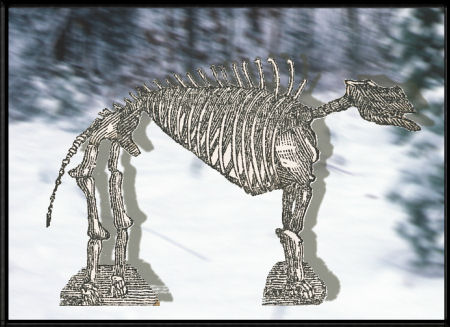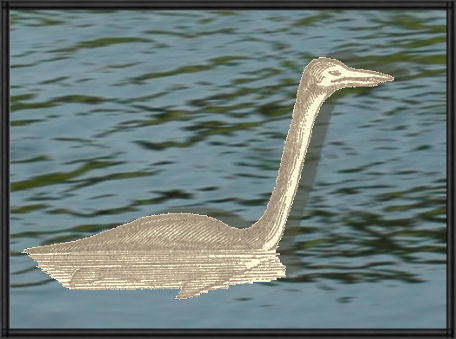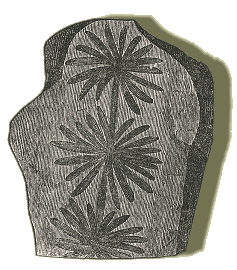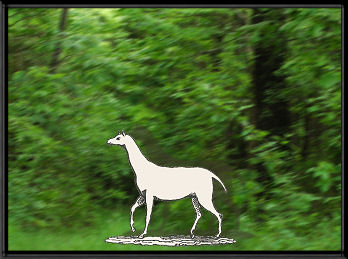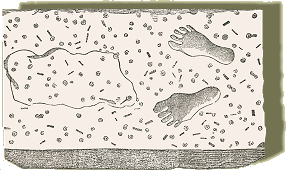 So many kids love dinosaurs that it’s difficult to remember that there
weren’t always dinosaurs for them to love.
So many kids love dinosaurs that it’s difficult to remember that there
weren’t always dinosaurs for them to love.
“ ‘A Former State of This Earth’: Fossils in Early American Works for
Children” is a
brief introduction
to works on fossils published for American children in books and magazines
from 1802 to 1853. Some are illustrated; many aren’t. Many of the
illustrations, as with much of the text, are
redrawn from earlier works.
Nathaniel Dwight’s A Short But Comprehensive System of the Geography of
the World (1802) includes mention of the
fossils at Big Bone Lick, but
no real assurance that the mammoth was extinct.
Ezra Sampson mingles fact with folklore in Youth’s Companion; or An
Historical Dictionary (1813), a collection of paragraphs on everything from
William Herschell to cannabis; his tangle of information on the
mammoth includes speculation
that its bones were scattered from Siberia to North America by the Deluge.

Taking the bible as a source of historical information, the author of
Blair’s Outlines of Chronology
(1825) presents the then-standard explanation that the earth was created
in 6 literal days about 6,000 literal years ago and that the Deluge was an
historical event, since “the earth bears visible marks of having experienced
some great convulsion.”
In “Petrified Forests” (1832),
the Juvenile Rambler
describes transformed forests near Rome and near Yellowstone, though the
author doesn’t attempt to place them in the geological chronology.
Parley’s Magazine often
explored the worlds of history and science;
“Fossil Shells” (1834) is a filler
pointing out that a rock layer found in France could also be found high
in the Andes, though there’s no attempt to explain how this was possible.

Evidently reprinted from a British work,
“The Fireside” (1839) describes
coal and the history of its use, explaining to readers of
Parley’s Magazine that it
is the remains of vegetation uprooted by the Deluge.
While mastodons had been discovered well before 1839,
“The Mastodon” is probably the first
description of it published for American children—though “description”
doesn’t mean that readers of the
Youth’s Cabinet would
understand what the animal looked like.
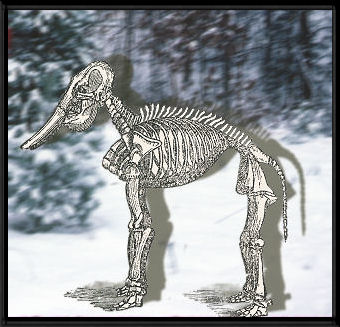
Robert Merry’s Museum
offers young readers an articulated mastodon skeleton and a detailed
description, in
“The Mammoth” (1841). The piece served
to introduce a fuller discussion of fossils to appear later.
Josiah Holbrook gives geology its due in
“Organic Remains” (1841), which
includes illustrations of a megatherium skeleton and explains that
animals become extinct, “to give place to other and different races, each
succeeding race being fitted to the state of the earth at the time they
inhabited it.”
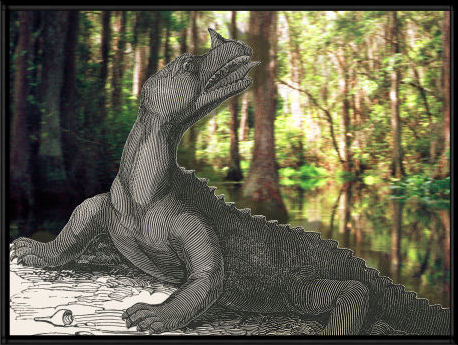
Probably the first dinosaur illustrations in an American periodical for children appear in
Robert Merry’s Museum in 1842,
though the word “dinosaur” isn’t used to describe the iguanodon, the
plesiosaur, or the ichthyosaur;
“Wonders of Geology” incorporates
material from several sources.
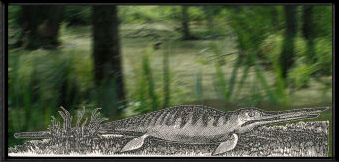
The well-illustrated The Wonders of Geology
(1845) examines the fossil record in detail, acknowledges that the
Earth is unimaginably old, and concludes that geology proves that the
biblical story of creation is correct.
The editor of
The Young
People’s Mirror presents readers with a long list of the types of
creatures found in fossil form, in
“Geology” (1849); implied is that the
creatures were exactly the same as modern versions.
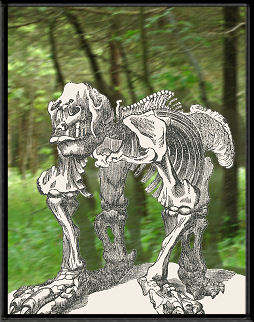
The Schoolmate
recreates fossil creatures like the megatherium, the plesiosaur,
and the dinotherium in words and illustrations in
“Wonders of Geology” (1852).
Just as the prehistoric world was remade for humans, readers are assured, so
will it be recreated again after Judgment.

In 1853, “Professor Pickaxe” explores the history of the Earth and the
variety of prehistoric life in the seven-part
“Letters About Geology”; geology proves
that the earth was created in 6 of “God’s days” untold ages ago. The
Deluge isn’t mentioned.
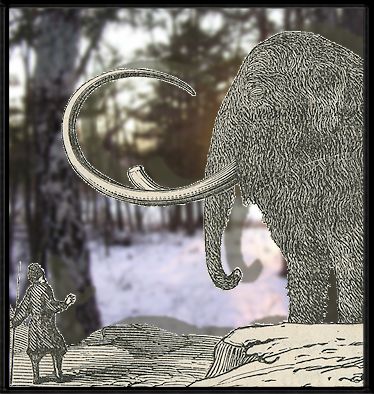
The mammoth’s bones had been clothed in illustrations by 1871, when
“The Mammoth” detailed an exciting
find by a Siberian hunter many years earlier.

“Uncle Jacob” discusses the investigation of creatures who lived
“many ages, perhaps, before the creation of man” in
“The Ancient World (1872),
accompanying an illustration based on Benjamin Waterhouse Hawkins’s sculptures
of labyrinthodons, pterosaurs, iguanodons, and other dinosaurs
in London’s Crystal Park.
Some good reading:
- Martin J. S. Rudwick. Scenes from Deep Time: Early Pictorial
Representations of the Prehistoric World. Chicago: University of
Chicago Press, 1992.
- Jane P. Davidson. A History of Paleontology Illustration.
Bloomington, IN: Indiana University Press, 2008.
- Paul Semonin. American Monster: How the Nation’s First Prehistoric
Creature Became a Symbol of National Identity. New York: New York
University Press, 2000.
- Stanley Hedeen. Big Bone Lick: The Cradle of American Paleontology.
Np: The University Press of Kentucky, 2008.
- Dennis R. Dean. Gideon Mantell and the Discovery of
Dinosaurs. Cambridge: Cambridge University Press, 1999.
- Adrienne Mayor. The First Fossil Hunters: Paleontology in Greek and
Roman Times. Princeton, NJ: Princeton University Press, 2000.
- Simon Winchester. The Map That Changed the World: William
Smith and the Birth of Modern Geology. New York: HarperCollins, 2001.
 So many kids love dinosaurs that it’s difficult to remember that there
weren’t always dinosaurs for them to love.
So many kids love dinosaurs that it’s difficult to remember that there
weren’t always dinosaurs for them to love.


